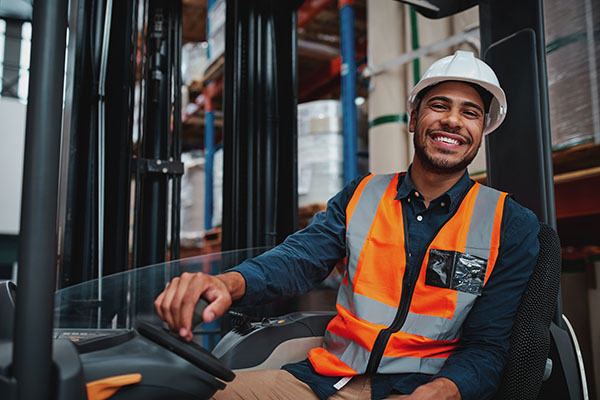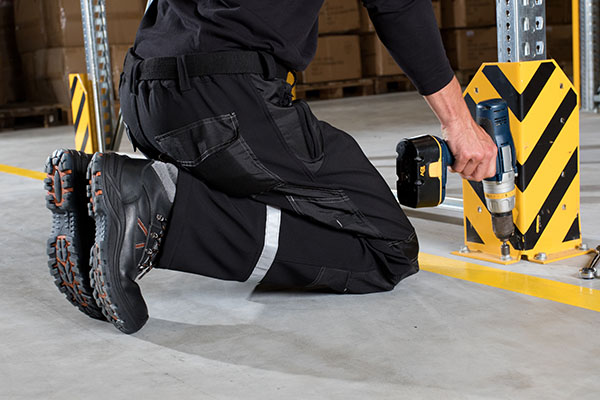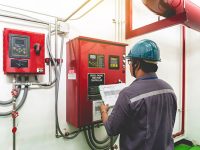As with all business operations, if you happen to have a warehouse, you must ensure you are aware of, and comply with your legal obligations.
 The warehousing sector includes the operation of supply chain and storage facilities. Some examples are as follows:
The warehousing sector includes the operation of supply chain and storage facilities. Some examples are as follows:
-
Wool storage service
-
Refrigerated storage service
-
Furniture storage service
-
Free store operation
-
Controlled atmosphere operation
-
Bulk petroleum storage service
-
Grain storage services
No matter what your business is, you have legal obligations regarding worker safety. This means that you have to identify hazards, assess the risks and eliminate or control those risks. Prioritising safety and health is paramount when implementing work procedures in your warehouse.
Warehouses contribute more than the average fatal accidents, among other kinds of businesses. Aside from injuries, storage and warehouse workers are also at a high risk of suffering from illnesses. In operating a warehouse or storehouse, the PCBU has an obligation to ensure, so far as is reasonably practicable, the health and safety of workers while the workers are at work.
Some areas to be considered:
1. Traffic management
Managing warehouse traffic is an important part of ensuring the workplace is without risks to health and safety. Vehicles including powered mobile plant moving in and around a workplace, reversing, loading and unloading are frequently linked with death and injuries to workers and members of the public.
Within the warehousing site, eliminating the risk by separating vehicles and pedestrians should be considered first.
2. First-aid
At a workplace there must be the provision of first aid equipment, that each worker has access to and access to facilities for the administration of first aid.
3. Managing the risks of falls
Risks to health and safety associated with a fall must be managed by providing adequate protection against
the risk. A safe system of work must be provided and maintained.
4. Forklifts
A person who operates a forklift must hold a high risk work forklift licence.
Training to get a high risk work licence must be completed as part of a course from a Registered Training Organisation (RTO).
Before a forklift is operated, a pre-start safety check should be done on both the forklift and any attachments.
5. Emergency Plans
PCBUs must ensure that an emergency plan is prepared for the workplace.
Emergency plans do not necessarily have to be lengthy or complex. They should be easy to understand and tailored to the specific workplace where they apply.
6. Information, training and instruction.
Information, training and instruction must be provided to workers and it must be suitable and adequate having regard to the nature of the work carried out by the worker, the nature of the risks associated with the work at the time the information, training or instruction is provided, and the control measures implemented.
7. Warehouse racking.
Any racking used in the workplace should be designed specifically for the size, shape and weight of the products being stored. It is also important that all racking is set up and maintained according to the manufacturers’ instructions.
There should always be some way of determining the weight of each unit load being placed into the racking (e.g. a safe working load sign) A racking supplier should provide the following:
- racking manufacturer’s name, supplier’s name and trademark, and the installation date
- designer’s name (company or individual)
- working unit load limit
- total working unit load limit for each pallet beam level
- total working unit load limit for each bay
- maximum distance from the base plate level to the first beam level and maximum distance between adjacent beam levels.
Safety Hazards and Tips for Warehouse or Storehouse Businesses

1. Manual handling or lifting
When done incorrectly, tasks done through manual handling or lifting can lead to accidents that can cause musculoskeletal problems. These accidents are commonly caused by overexertion, repetitive motions, and movements done with awkward postures.
Here are the safety measures to consider to minimise hazards in this regard:
-
Teach your people to observe the right ergonomic posture when moving or carrying any kinds of loads. It is best to ask for help when the load is too heavy.
-
Create a plan beforehand to determine if lifting can be minimised by applying a good engineering design.
2. Forklifts
Forklifts are crucial in all storage and warehouse facilities, but improper use can lead to accidents and serious injuries. One of the hazards associated with forklift operation is the risk of the forklift tipping over. What can cause it?
- Excessive speed – especially while turning.
- Heavy braking.
- Overloading.
- Moving with an elevated mast and load.
- Sloping surfaces.
- Traveling down ramps with load forward.
- Turning sideways on ramps
3. Conveyors
This equipment is typically used to transport products or goods from one warehouse to another. The machinery poses potential hazards, such as workers getting hit by falling objects or getting caught in the equipment. Here are some safety measures to consider:
-
During the training of conveyor operators, each operator must understand the safe operation of the conveyor and all safety precautions. Also during the training period, a conveyor operator must be supervised by a worker with a thorough knowledge of conveyors.
-
Implement and ask for strict observance of the Lockout/Tagout (LOTO) practices during the equipment’s repairs and maintenance.
4. Energised equipment
All employees working in the area should undergo training on LOTO procedures, including the application and removal of the devices.
Ensure that the instruction, information, training and supervision is appropriate and that it is practiced in all operations. The locking out / isolating of all sources of energy prior to maintenance, cleaning etc., greatly reduces the likelihood of incidents, such as workers getting electrocuted or people getting entangled in moving parts.
5. Hazardous chemicals
Ensure any decanted hazardous chemicals are correctly labelled and also that Safety Data Sheets readily available, which these must be no more than 5 years old.
Ensure any relevant personal protective equipment is supplied and workers are trained in how to use it.
 6. Loading areas
6. Loading areas
One of the most critical hazards that you must eliminate if possible, is the risks of a worker being hit or crushed by mobile plant (e.g. truck, forklift etc.) This can be caused by forklift rear swing or mobile plant striking someone. Here are some safety measures you can implement to prevent reduce risks:
-
Separate people and the traffic areas by installing physical barriers, and have warning alarms if someone enters the area.
-
Install speed limiters and proximity sensors.
7. Charging stations
Charging stations can cause explosions and fires if you will not implement the right protocols in using them. These units can be powered by batteries, liquid petroleum gas (LPG), or gasoline. They are used in recharging and refueling all powered equipment. Here are some of the safety measures to follow regarding the use of charging stations:
-
The area where they are placed must have a proper ventilation system. Adequate ventilation will help in dispersing harmful gases.
-
Ensure any relevant personal protective equipment is supplied and workers are trained in how to use it.
8. Storage of materials
Improper storage of all the things used in the work area and imbalanced stacking of loads can lead to potential risks, such as falling objects, and accidental tripping and slipping of your employees. Here are the safety protocols to be considered:
-
Always place loads properly and evenly. Arrange the heavier loads on the middle to lower shelves, and keep the lighter ones on top. When removing a load, remind your workers not to do it in a hurry. Ensure loads are secured.
-
Ensure that passageways and aisles are in good condition and clear all the time to prevent your employees from falling, tripping, or slipping.




